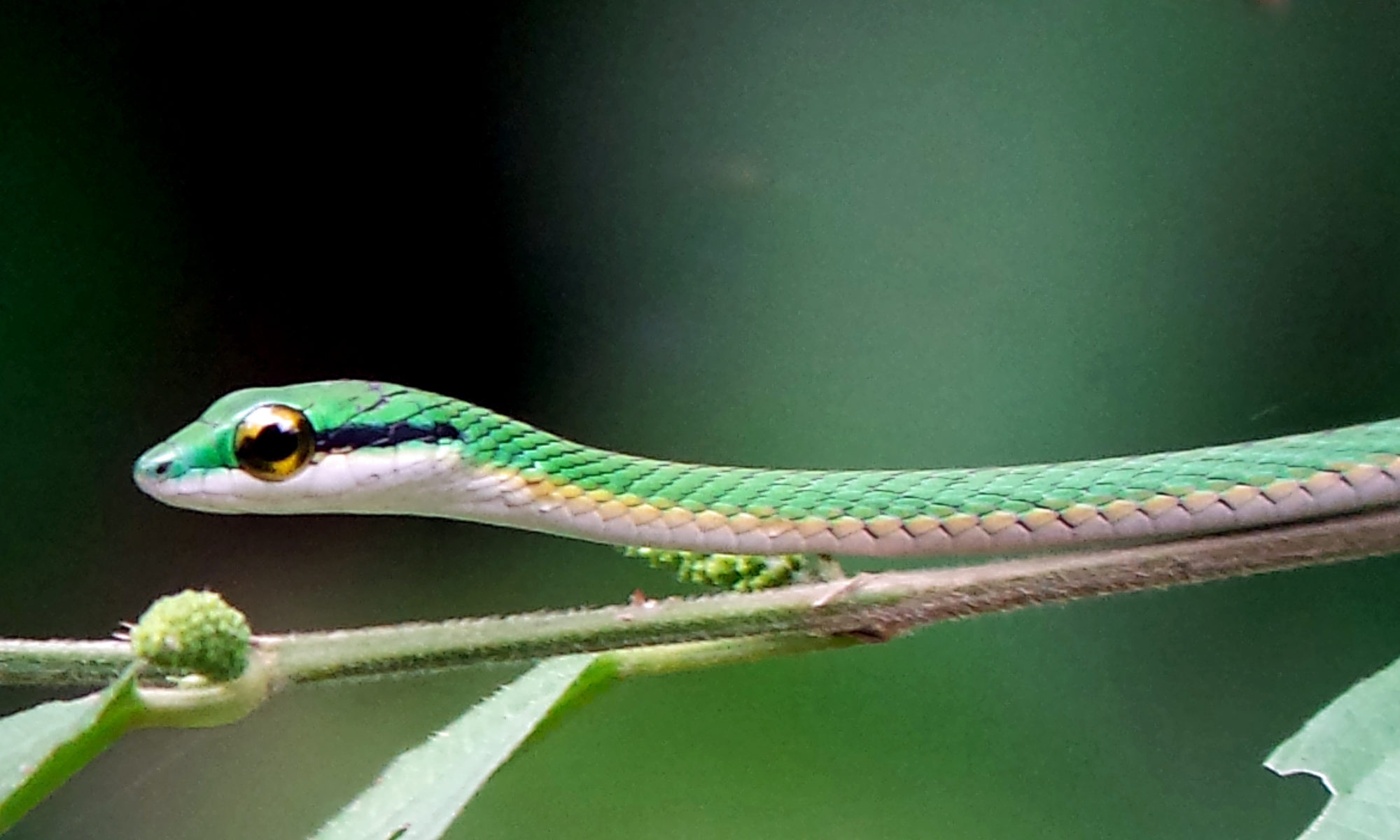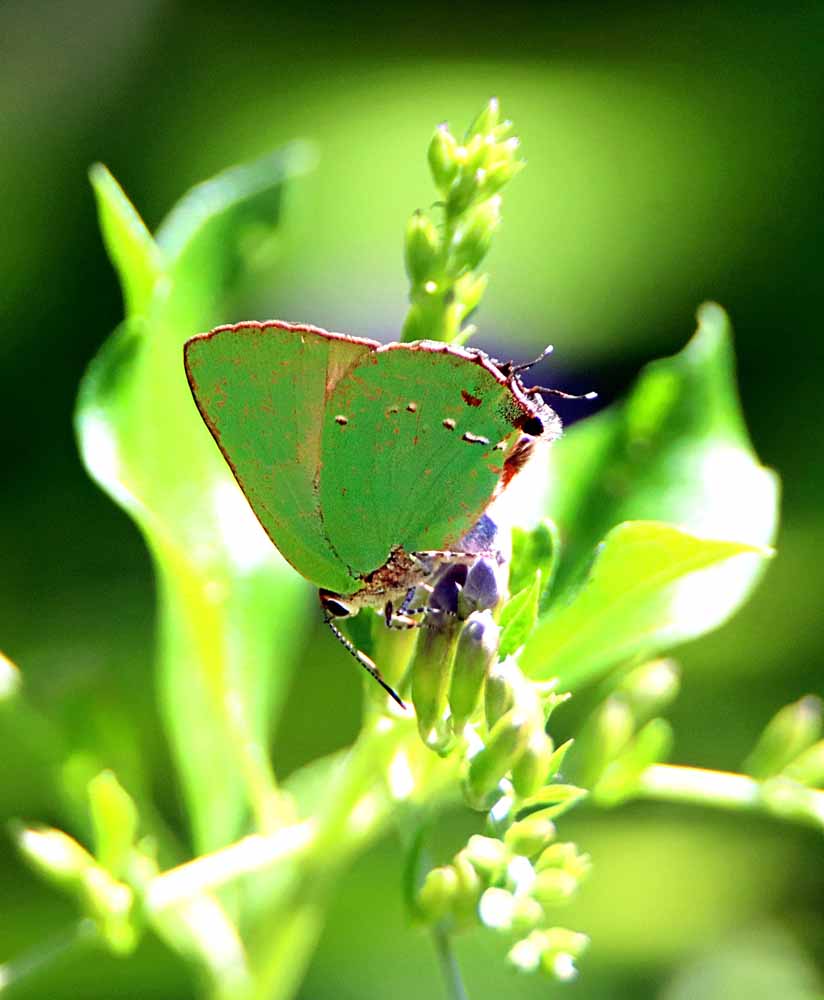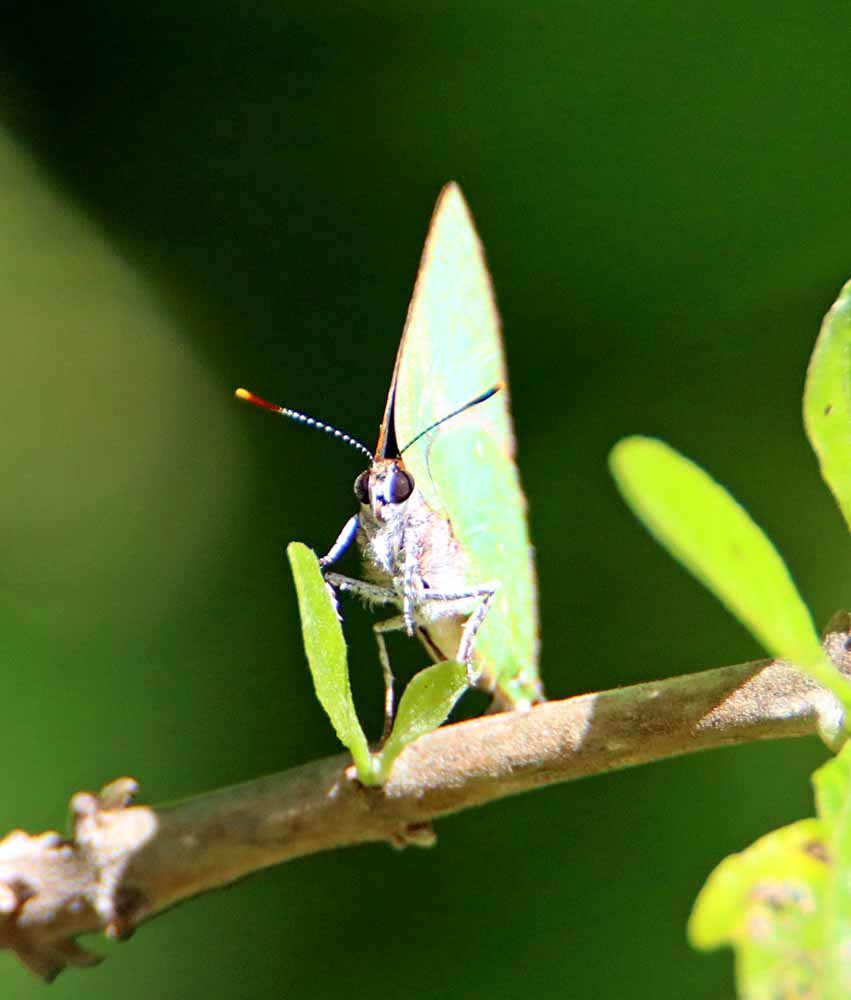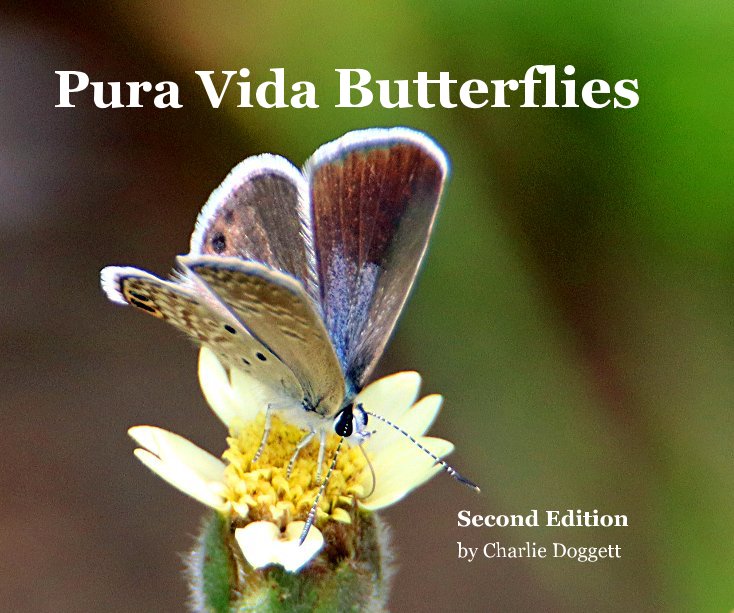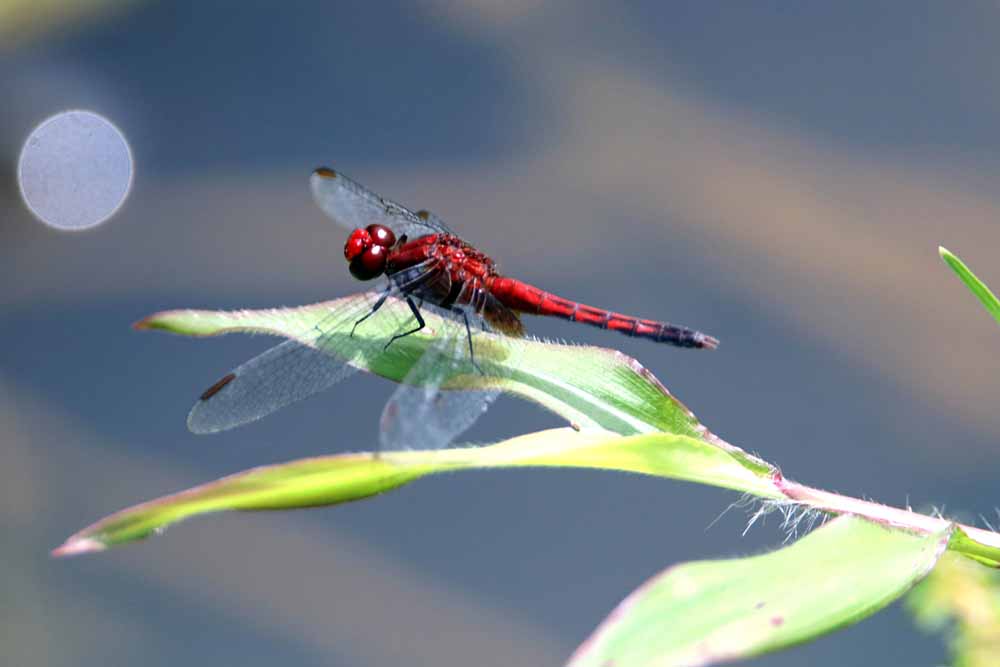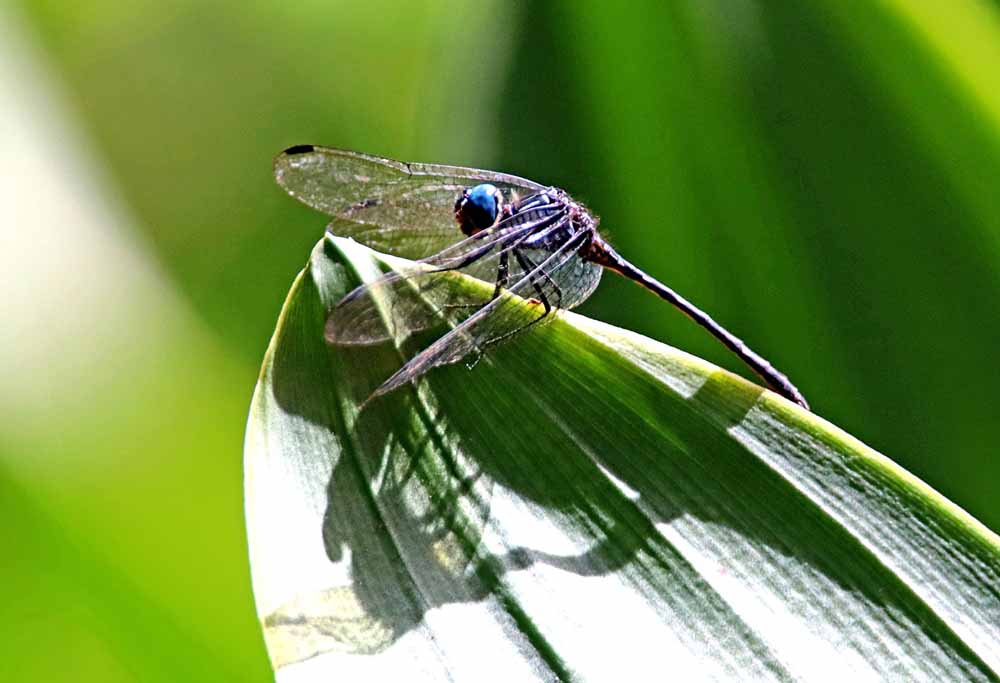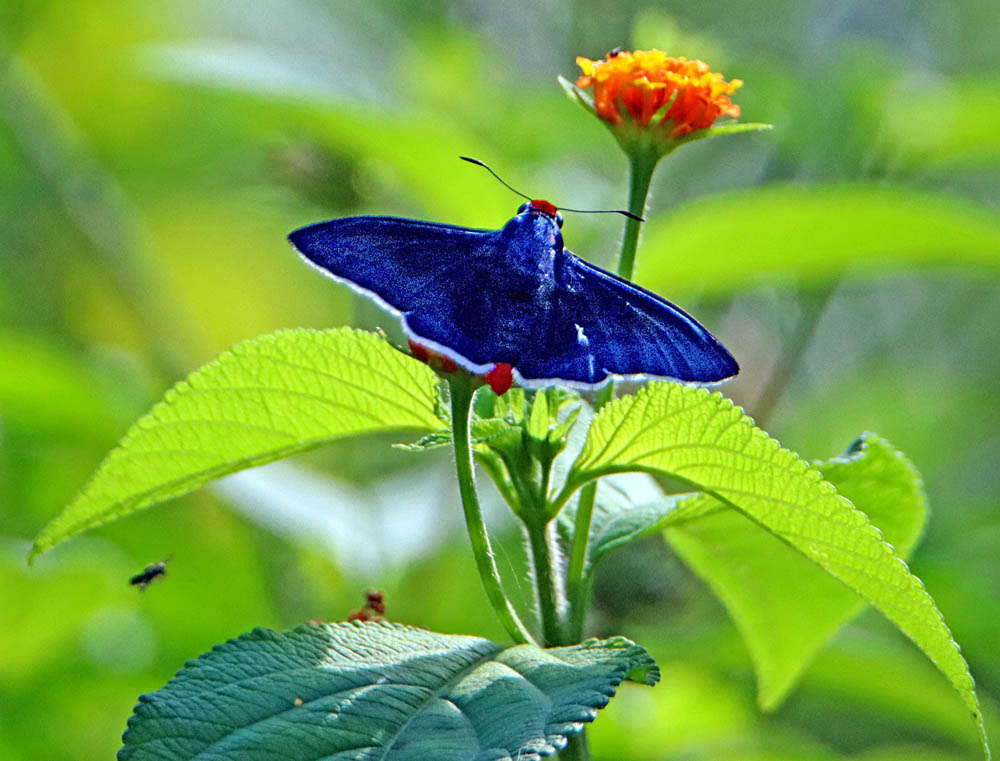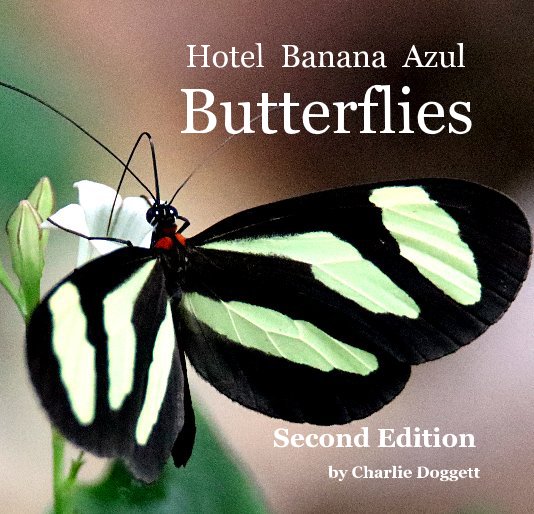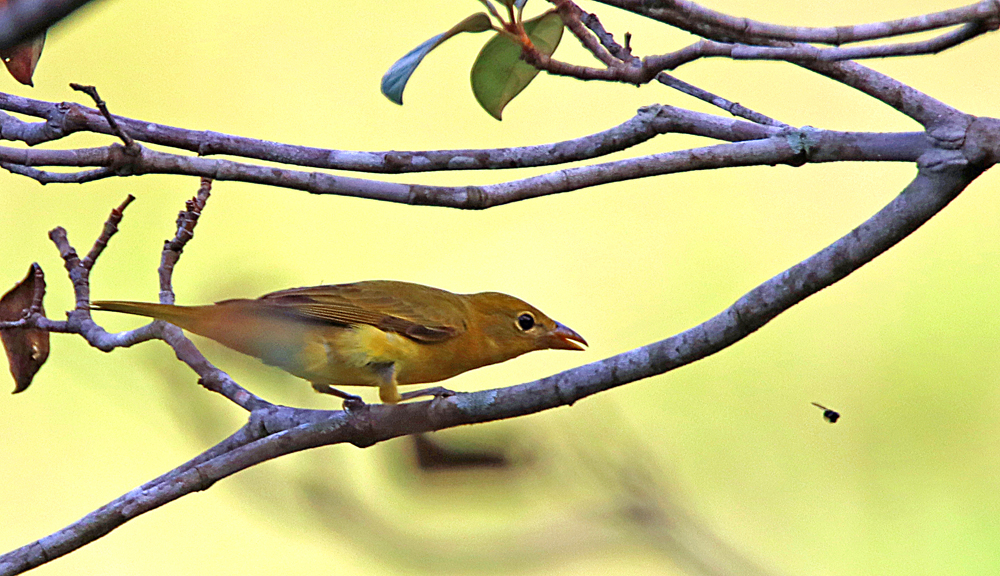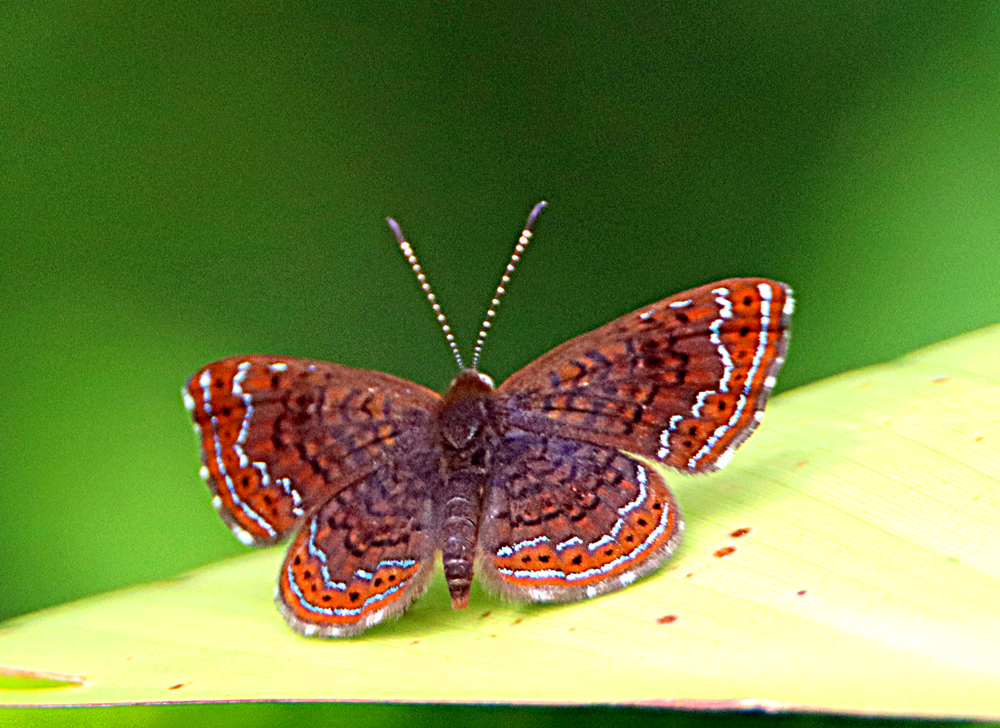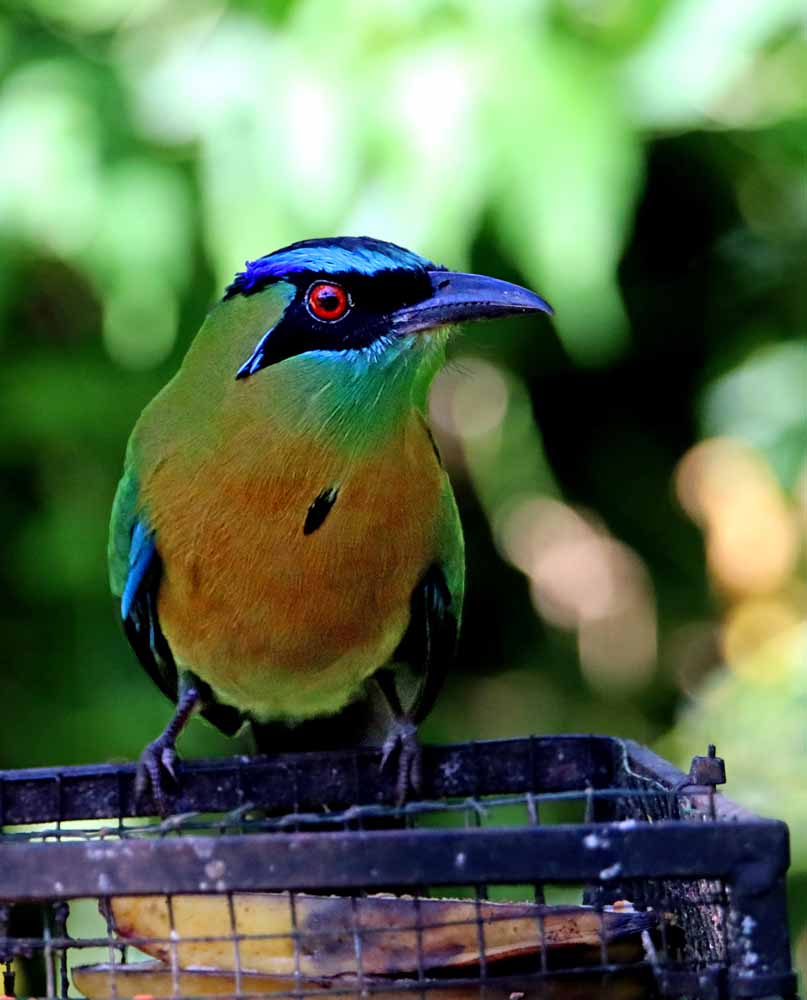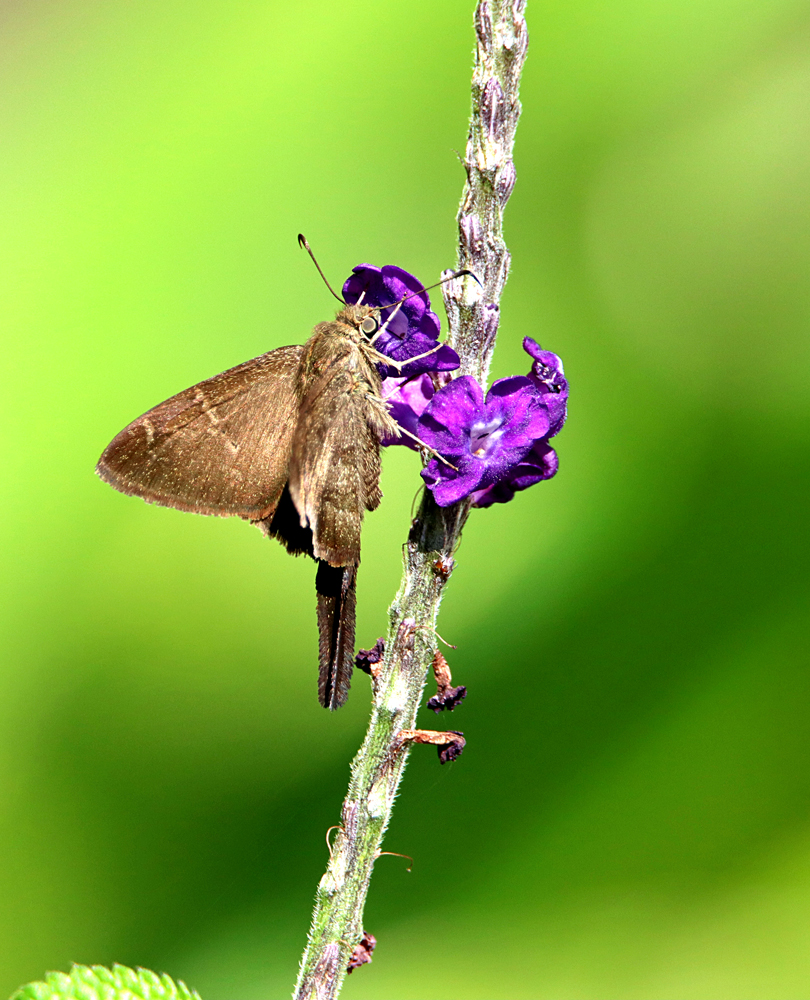Sorry that I keep switching between more photos from the Macaw Lodge visit and photos in my own garden at home. But another new species is a big deal to me, even though this one did not make my new butterfly book which is already being printed! 🙂
It is another tiny Metalmark with the English name of Blue-based Theope and the scientific name of Theope virgilius. The top of his wings are a bright sky-blue, but because it was windy, he never perched with wings spread and thus no photos of top. I saw the blue when he was flying, but too fast to photograph! 🙂
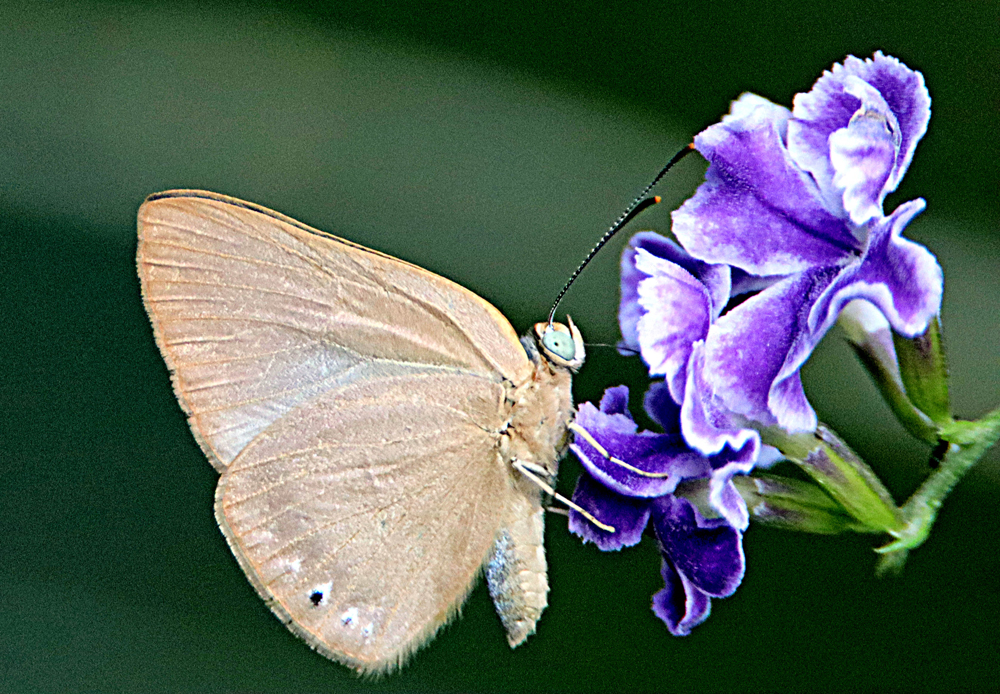
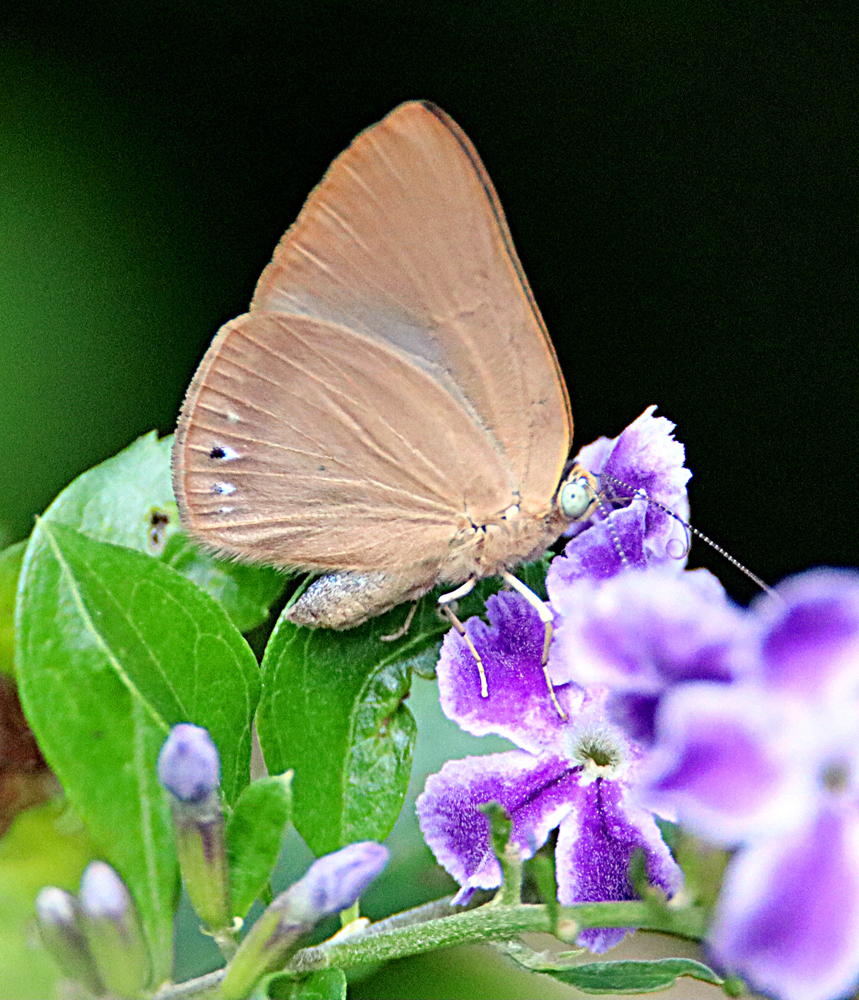
And see more shots I made of him in my garden in my Blue-based Theope GALLERY.
There haven’t been many submitted on butterfliesandmoths.org, but you can see those four from Mexico and Costa Rica at that link plus a few more at butterfliesofamerica, also from Mexico and Costa Rica. Our regional guanacasteconservationarea includes photos of the caterpillars and iNaturalistPanama has some nice photos of the butterfly which they call “Tourmaline Butterfly” in Panama, but it is the same one. 🙂
Butterflies are amazing and beautiful and there are so many of them! The frequent new discoveries I’m having are a joy! 🙂
¡Pura Vida!
